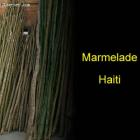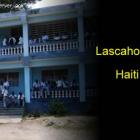ADVERTISEMENT
Alexandre Petion - Haiti Observer Blog
Alexandre Petion, Haiti Observer Blog. Read the following articles about Alexandre Petion
The City Of Petion-Ville, Founded By Boyer on September 22, 1831
John-Pierre Boyer was the founding father of the city of Petion-Ville. He was the president of Haiti between 1818 and 1843. He was one of the notable leaders of the Haitian revolution. On 22 September 2011, he founded the city of Petion Ville in the eastern suburbs of Port au Prince. He named the city after his predecessor, President Alexandre Sabes Petion.
Alexandre Petion was one of the founding fathers of Haiti and first president of the Republic of Haiti. The city at that time was in no way comparable to its current status. Guarded mansions of Petionville looks like a Haitian version of Beverly Hills. Here you can find everything that expect to find in any international city.
Dessalines went to visit Petion as demonstrators made rare trip to Petion-Ville
This is the phrase that I have been hearing all this week regarding the protest that took place last Thursday in Petion-Ville where several thousands of people were asking for the removal of President Michel Martelly from office. Actually the notion "Dessalines visiting Petion" was used to refer to the Race issue in Haiti once again. In a sense, Dessalines represents the Black, poor, uneducated Haitians while Petion, represents the elite, mulato, educated, affluent Haitians.
The anti-government protest got out of control after demonstrators made a rare trip to Petionville. Some opposed to the demonstration threw stones at the marcher and Police fired tear gas to break it.
Haiti National Flag Symbol of Might, Endurance, and Triumph
On May 18, 2013, the Haitian National Flag will celebrate 210 years of independence from French foreign oppression. The history of the flag dates back to 1803 when--in a defiant move--revolutionary leader, Jean Jacques Dessalines, desecrated the French flag. He removed the white-center panel of the tri-color and created the first national Black Republic flag.
The lore of the Haitian National Flag is rich in symbolism. The most popular meaning of the blue-and-red horizontal panels is representation of skin tones: blue for black and red for white. When Alexandre Petion became the next leader of Haiti, he added a unifying element, the nation's first coat-of-arms. Situated within a small, white square, fusing blue-and-red side-by-side panels, a tableau reveals the history of slavery, the fight to end it, and its ultimate abolishment.
A Brief History of Haiti Constitution
The government of Haiti GOH) has passed almost as many constitutions as it has survived coup d'etats. Haiti's current Constitution, passed in 2012, is the 23rd one written into law.
The first Constitution of Saint-Domingue in 1801 appointed General Toussaint L'Ouverture as ruler for life. It also put an end to slavery, democratized hiring practices, and prohibited all religions except Catholicism. The 1805 Constitution allowed all forms of religious faith and approved reverse-race discrimination, calling all citizens black. The 1807 Constitution removed the reverse-race discrimination clause.
In 1816, the 1806 Constitution was revived, declaring President Alexandre Pétion President for Life. It also gave him unilateral power over Parliament. But under Jean-Baptiste Riché, the 1816 Constitution was put into effect again.
Alexandre Petion for helping Simon Bolivar.
Here is a picture demonstrating the appreciation of the people of Venezuela for Haiti and President Alexandre Petion in particular for helping Simon Bolivar.
He has been recognized for giving sanctuary to the independence leader Simón Bolívar in 1815. But not only that, Alexandre Petion also provided Simon Bolivar with material. This played an important role in Bolivar's success in liberating the countries from Spain
Role, Term of Haitian Presidents from Haiti Independence to 2013
The Haitian government is led by a president, who shares his/her executive power with the prime minister. Once elected by popular vote, the president will run the country for five years. After the term, the president could not run in the next election. He/she has to wait for five years in order to seek a second term. Haiti presidents can only serve for a maximum of two terms.
Not everyone can run for president as there are certain qualifications and requirements to be eligible for the seat. Only candidates with Haitian citizenship by birth can run for the position, as well as those who are at least 35 years of age. Jail sentence, loss of civil rights and lack of property ownership and residency can make a candidate ineligible to assume the position.
Return of Serment des Ancetres Painting To Haiti
After two years when relations with France were restored, Michel Martelly, President accompanied by Laurent Lamothe, Prime Minister, Didier Lebret, France Ambassador and Jean Mario Dupuy, Minister of Culture, all got together last Friday to welcome the Serment des Ancêtres painting
Symbolism of the Painting
They were welcomed to the table on which lay 'Serment des Ancetres' at the airport Toussaint Louverture's diplomatic lounge. The 'Serment des Ancetres' is the painting work of Guillaume Guillon-Lethiere (1760 -1830) painter in the year 1822.
The painting symbolizes the historical meeting between Lieutenant Toussaint Louverture, Jean-Jacques Dessalines, Black General, Alexandre Petion and Saint Domingue, the head of mullattoes. In November 1802, the Lieutenant Toussaint Louverture sealed an alliance to get the French troops ousted.
Plaisance, A Favorite Sightsseing Destination In Haiti
Plaisance is located in Haiti's Nord Department. In the Plaisance Arrondissement, it is a municipality. Around 63,278 people inhabit the place as indicated by the 2009 estimates. During the colonial times, the French considered Plaisance a favorite destination for relaxation and rest.
Sightseeing
Located nearby, is a peak called Morne Bedoret at a height of 543 meters. The Fort Bedourete is located here. There are a large number of sites and monuments to see in Plaisance. They include Miracles Virgin Gobert's former chapel where in 1803, Alexandre Petion and Jean-Jacques Dessalines met before the launch of the final assault against Cape Francais.
Our objective is to share with you news and information about Haiti and the people of Haiti. Traditions, habits and the way we were or grew are alive in this site. We highly recommend that you Subscribe to our Newsletter and also share with us some of the things that are memorable and made us unique people.

 Marmelade, Haiti
Marmelade, Haiti  Newsletter
Newsletter  Saint Marc, Haiti
Saint Marc, Haiti  Lascahobas, Haiti
Lascahobas, Haiti  Maissade, Haiti
Maissade, Haiti